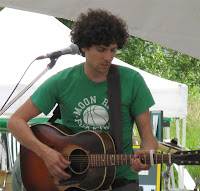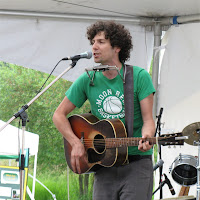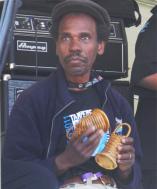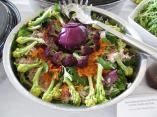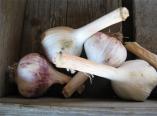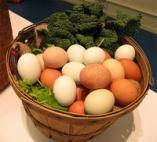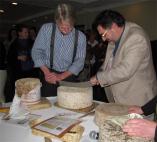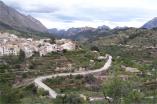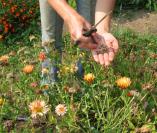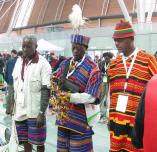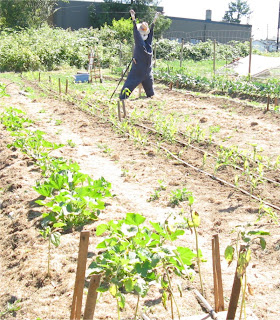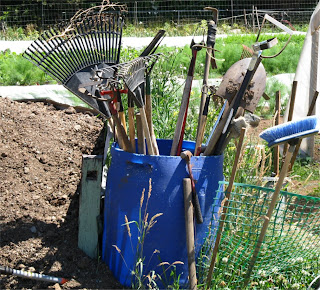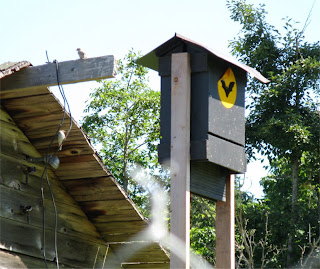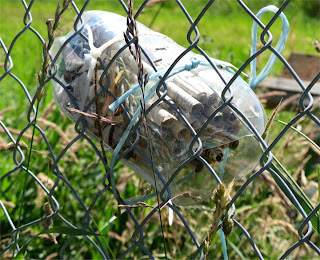The Organic Islands festival took place last weekend, and we went for a sunny Saturday afternoon of tastings and talks and music. Found some Emmer (aka Farro, in Italy) an ancient wheat now being grown for the first time on Vancouver Island.

There were interesting causes to support, like this one where you can register your fruit tree and have others pick and use your fruit if you don’t want all of it.
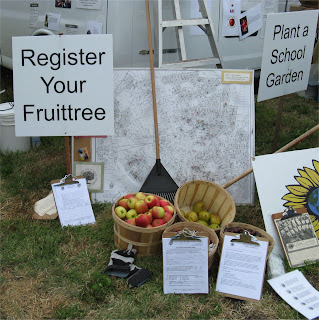
A lost tree being tormented by small children.

One of the events we wanted to catch was the GE Free BC panel, featuring Yukon farmer Tom Rudge,
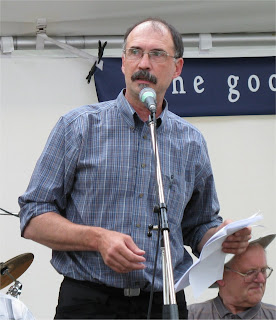
Powell River politician Colin Palmer,
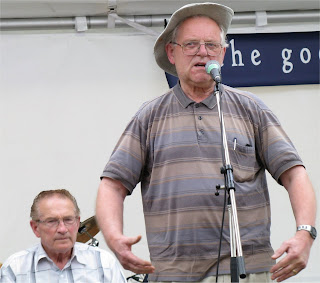
activist Josh Brandon from Greenpeace,

and special guest Percy Schmeiser,
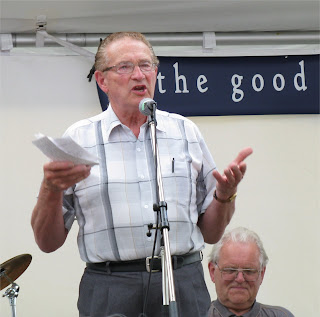
whose story I knew from CBC coverage and films like The Future of Food and Life Running Out of Control.
Schmeiser impressed me with his speaking skills. I hadn’t known he was a former MLA as well as a farmer. I did know he was a life-long seed developer who had spent $400,000 and 7 years of his life fighting Monsanto on the grounds of patent infringement when Monsanto found GM (Roundup-Ready) canola growing on Schmeiser’s field in 1998.
The rather alarming issue of GM canola crossing itself with non-GM canola is something Schmeiser talks a lot about: “You can’t contain nature” is his mantra, and the message he dearly wants to deliver to regions tempted to introduce GM crops alongside non-GM.
Canola, a Canadian cross-bred (not genetically-modified) brassica plant that was developed in the 1970s, is an important crop because it is used for vegetable oils (lower in saturated fats than any other oil) and animal feed as well as a rotation crop.
Canola has proven it doesn’t obey corporate laws of ownership and whether through wind, rain, pollen drift, flood or spillage, GM and non-GM canola have interbred right across Canada and pretty much killed the country’s organic production of canola (no GM crops or products are allowed in Canadian organic production).
Not only does being GM make the contaminated crops unexportable to the many countries which do not allow GM imports, it also – from Schmeiser’s experience – makes those crops, and their seeds, the property of Monsanto, since you have, willingly or not, and no matter to what degree, ended up growing a Monsanto-engineered plant. This is anathema to farmers who have traditionally saved seed from their own crops to plant the next year. But if you grow GM plants, Canadian patent law prevents you from saving and sowing or trading or selling that seed, since it includes Monsanto technology and is therefore not yours to do with as you please. To reinforce this message, farmers who buy the seed are required to sign Technology Use Agreements which forbid farmers from re-using seed, and require that they purchase new seed each year
Schmeiser also talked about the promises Monsanto had made: higher crop yields, better nutritional content, decreased use of pesticides (insecticides and herbicides), an end to world hunger. Instead, the crop yields from GM crops are lower, nutritional values from industrial crops are demonstrably down, and the potency of today’s Roundup is 4x what it was ten years ago because glyphosate-resistant strains of weeds (superweeds) have evolved; the content of new herbicides currently used in Saskatchewan includes Dioxins, which have toxic effects on human health and are largely passed to humans through the food supply.
Standing ovation…
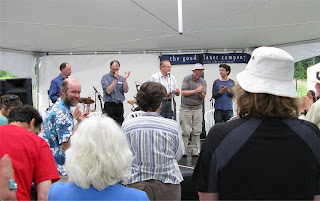
Also discussed by the panel was the point about there being no research about GM crops aside from what Monsanto itself funds, selects and publishes, and how that just might be a problem in terms of credibility and human safety.
The GE Free BC campaign aims to make BC a GE free region. They’re also linked with campaigns to promote that seemingly elusive goal of requiring food containing genetically engineered substances to be labelled in this country, and another worth-while movement to ban Terminator technology, which would allow corporations to genetically sterilise their crops, ensuring farmers would have no choice but to purchase seed from them each year.
After that we needed a hot dog, from the eternally popular organic hot dog stand where we managed to get the last three hot dog buns on offer for the day.

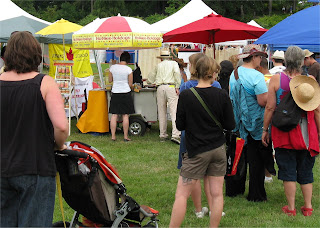
Then we wandered beneath the attractive drystone arches of the Green Drinkery
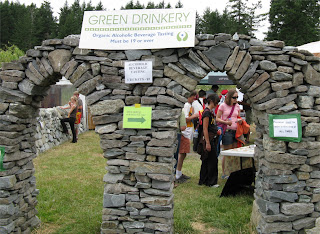
for a glass of local wine

and a prime location to hear former Victoria resident Jeremy Fisher play us out.

